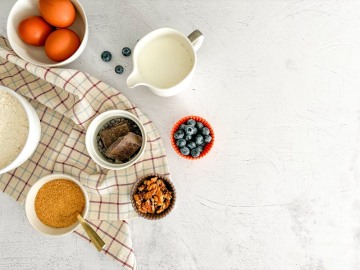Gender stereotypes regarding physical appearance are a social construction that has significantly influenced the way the human body is perceived and valued throughout history. These stereotypes, which set expectations and norms for how men and women should look, can be restrictive, harmful, and ultimately limiting to individual development and self-esteem. In this article, we will explore in depth the gender stereotypes associated with physical appearance, argue their origin and evolution, and discuss the importance of challenging and redefining these concepts in today's society.
Gender stereotypes.
Gender stereotypes are generalized beliefs about how men and women should be and behave according to their gender. These stereotypes are transmitted through various forms of socialization, including media, advertising, education, and social interactions. In the context of physical appearance, gender stereotypes dictate expectations about the ideal body for each gender, including characteristics such as weight, height, muscularity, body shape, and facial appearance.
Female stereotypes in physical appearance.
Gender stereotypes related to women's physical appearance often emphasize thinness, youth, and conventionally attractive beauty. Women are bombarded with photoshopped images of models and celebrities who represent an unattainable standard of beauty. Women are expected to live up to these beauty ideals at the cost of their health and emotional well-being, which can lead to eating disorders, body anxiety, and low self-esteem. These stereotypes can have profound consequences on the way women see themselves and are perceived by others in society.
Male stereotypes in physical appearance.
On the other hand, men also face gender stereotypes regarding their physical appearance. Men are expected to be tall, muscular and athletic, with a physical appearance that reflects strength, power and dominance. These ideals of masculinity can lead to pressures to increase muscle mass, engage in risky sports, and adopt aggressive behaviors to demonstrate their masculinity. These stereotypes can be equally harmful to men's mental and emotional health, creating pressure to meet unrealistic and potentially dangerous standards.
Origin and evolution of gender stereotypes in physical appearance.
Gender stereotypes in physical appearance have their roots in the history and cultural traditions of various societies. Since ancient times, beauty standards have been established that reflect the values and beliefs of a certain time and place. In many cultures, beauty has been associated with health, fertility, and the ability to reproduce, which has led to the idealization of certain physical characteristics in men and women. Over time, these beauty ideals have been perpetuated and reinforced through the media, advertising and other forms of cultural influence, contributing to the creation and perpetuation of gender stereotypes in physical appearance.
Impact of gender stereotypes on mental and emotional health.
Gender stereotypes in physical appearance can have a significant impact on the mental and emotional health of men and women. People who do not meet society's imposed beauty standards may experience feelings of inferiority, body shame, and social anxiety. This can contribute to the development of eating disorders, depression, anxiety, and other mental health problems. The pressure to meet these beauty ideals can be especially intense for people who belong to marginalized groups or who do not conform to binary gender norms, which can lead to greater vulnerability and risk of discrimination and social exclusion.
Challenges to gender stereotypes.
It is essential to challenge and demystify gender stereotypes in physical appearance to promote body acceptance and diversity. This includes celebrating beauty in all its shapes and sizes, challenging unrealistic beauty standards, and promoting more inclusive representation in media and advertising. It is also important to foster a culture of respect, acceptance and mutual support, where all people are valued for who they are, beyond their physical appearance. By challenging physical gender stereotypes, we can create a more inclusive and equitable environment where all people feel safe and accepted for who they are.
Promoting diversity and body acceptance.
To create lasting change in society, it is crucial to educate and sensitize people about the harmful effects of gender stereotypes on physical appearance. This can be achieved through school education, public awareness campaigns, mentoring programs and support resources for people affected by body image issues. By promoting diversity and body acceptance, we can create a world where all people feel valued, respected and loved for who they are, regardless of their physical appearance.
Gender stereotypes in physical appearance are a harmful manifestation of gender norms that perpetuate discrimination and inequality. Challenging these stereotypes and promoting body acceptance and diversity is essential to creating a more equitable and compassionate world. By working together to challenge unrealistic beauty ideals and celebrate diversity in all its forms, we can build a more inclusive and welcoming society for all people, regardless of gender, age, race, sexual orientation or physical appearance.






